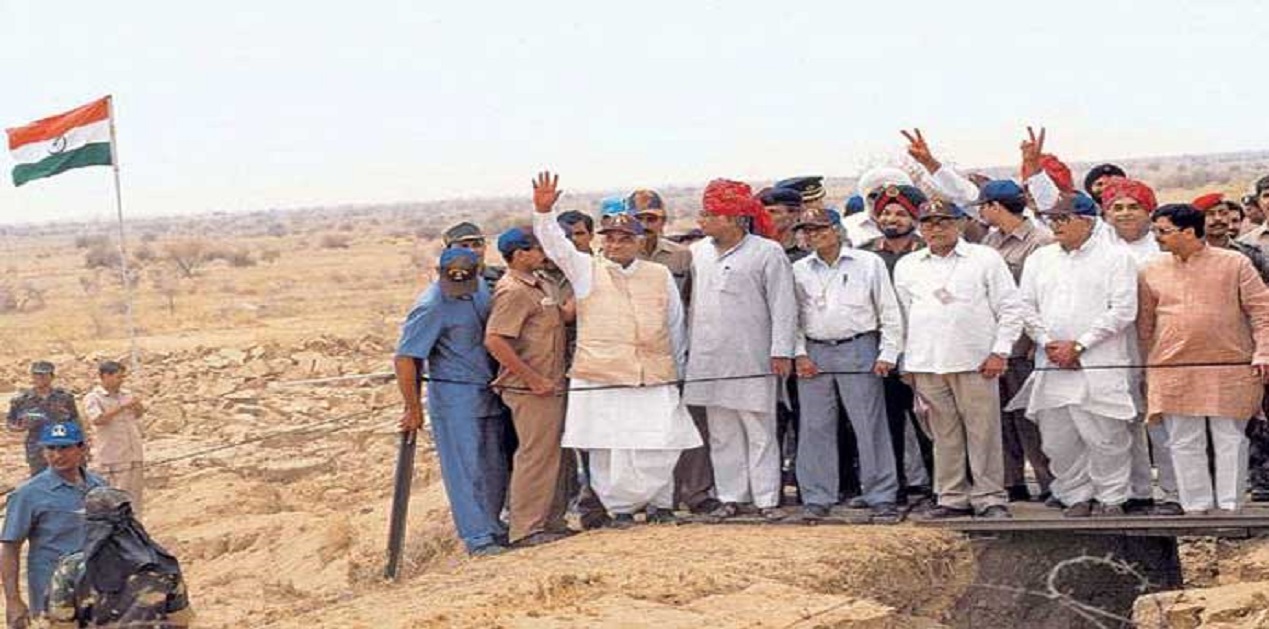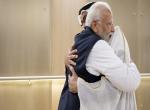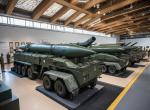The story of India becoming a nuclear-capable state began twenty-five years ago with nuclear tests conducted on 11th and 13th May 1998. The move brought serious criticism from both domestic sections, including Congress and Left parties and the international community, including the US and western sanctions, China called the act as “outrageous contempt for the common will of the international community”, and Pakistan immediately followed with its series of nuclear tests. Despite these prevailing circumstances marked by the presence of two nuclear neighbours, India, in terms of its nuclear behaviour, has demonstrated ‘responsible behaviour’ along with the exercise of ‘strategic restraint’ in both conflicts and episodes of crises since the Pokhran II tests.
The nuclear tests over the years made a better geopolitical standing in terms of security and status as a response to threats from its neighbours. The reason for India acquiring the nuclear bomb to gain prestige is defined in terms of symbolic value. The historical context points towards misuse of real security apprehensions and anxiety in New Delhi as the fundamental guiding force. The best litmus test of India’s case of post-nuclearisation is its nuclear exceptionalism, evident in its responsible nuclear behaviour over the years, establishing its image as a responsible power in the eyes of the international community.
The idea of responsibility can be framed in terms of India’s interaction with its adversaries, engagement with the global non-proliferation regimes, and positive contribution to the global nuclear order recognised by other actors in the system. The four pillars of responsible behaviour - NFU doctrine, nuclear safety and security, nuclear diplomacy and nuclear norms highlight India’s evolution in the post-Pokhran phase of the journey.
Responsible NFU Doctrine and Posture
By producing the nuclear doctrine, unlike our neighbours, India has shown itself as a responsible state and relatively reduced the space for ambiguity. India has a No-First Use policy that emphasizes the deterrent role of the nuclear weapons. The political value associated with nuclear weapons is nothing but the behaviour of a responsible state. The policy of credible minimum deterrence belabours that India would develop a decent nuclear arsenal contributing to the maintenance of strategic balance in the region. India’s responsible behaviour is not just limited to doctrine but also its operational conduct. India maintains its nuclear deterrent as a force-in-being, a de-mated deterrent where different components are stored separately under different control. Force-in-being reduces the chances of any accidental fire. India’s nuclear weapons are absolutely under civilian control. India’s Nuclear Command Authorityis under the PM, who heads its political council, and NSA heads the executive council. The control over the fissile cores and the weapon assemblies are under civilian authorities (DRDO & BARC), while the military maintains the delivery systems.
Responsible ‘responsibility’ for Nuclear Safety and Security Culture
Over the decades, India has advocated for the peaceful use of nuclear energy to meet the increasing energy demands and fulfill other useful civilian purposes of the atom. In doing so, India has been open to getting assistance and expertise in constructing, setting up, and maintaining of nuclear power plants from major players like the US, Russia, France, and Canada. The operationalisation and maintenance of nuclear facilities and installations involve abiding by certain rules and regulations and forming safety and security protocols. India’s responsibility burden becomes more in the backdrop of its troubled neighbourhood where the probabilities of nuclear terrorism and illicit proliferation remain prospective but not off the list in nuclear threat mapping. To this end, India has shown active participation at the Nuclear Security Summits (NSS) along with a compliant of important ICSANT, CPPNM, UNSCR 1540, and UNSCR 1373.
India made a sensible move with the separation of civilian energy-focussed facilities from the strategic ones to calm the apprehensions of the West about India’s management of the nuclear reactor infrastructure base. Since Pokhran II, India has aligned its goals related to nuclear energy and infrastructure upgradation with its governance structure and mechanisms, technology and establishing a robust safety and security culture. India’s scientific and technological maturity over the past twenty years has also brought self-sufficiency and a credible name among the group of civilian nuclear energy generators, with a detailed roadmap for expanding the nuclear energy base in the domestic sphere. India’s adaptation of IAEA standards with the signing of the Convention on the Physical protection of Nuclear Materials in 2005 has sent a positive signal to the international community. At the same time, India’s cooperation with major powers brings nuclear learning in terms of adapting itself to the best existing practices in nuclear safety and security domain.
Responsible Nuclear Diplomacy
Despite threats of diplomatic coercion and active persuasion not to conduct nuclear tests, Indian policymakers stood their ground and made it come to fruition with the Pokhran II tests. For India, during the 1998 tests, the situation demanded a choice between abolishing the nuclear weapons programme and ensuring better nuclear commerce with major powers. India chose the first option and later consistently built on its diplomacy to create a conducive environment for its legitimacy and manage the needs of the nuclear energy domain. The condition for India turned worse as the West came with scathing criticism at all levels against India, making it a pariah at the international level. India’s tests were a particular blow to the US intelligence capabilities. The US retaliated with the Glenn Amendment, which brought multiple sanctions against India, aiming to isolate it internationally. The Jaswant-Talbot talks under the Vajpayee administration helped both India & the US overcome cynicism. The success of this diplomatic gain was that by 2005 India-US agreed to sign a civil nuclear deal. The Civil Nuclear deal, apart from highlighting the level of confidence and trust between the US & India, got India an exclusive Nuclear Suppliers Group waiver,which meant India would no longer be subjected to nuclear apartheid. It opened avenues for the import of dual-use technologies, the fulfillment of energy needs, and India’s role as a legitimate actor in the global nuclear order. In return, India agreed to integrate itself with IAEA safeguards. India’s consistent and responsible behaviour on safeguards and its nuclear conduct became a major consideration for a special NSG waiver, especially by the European countries.
An Advocate of Responsible (non-proliferation) Norms for the Global Nuclear Order
In the words of Jaswant Singh, writing in Foreign Affairsin September 1998, India cannot afford to remain outside the club of nuclear-armed countries and thus, it rejected the big powers' construct of haves and have-nots to counter the hegemony of rule-making by the exclusive club of nuclear countries. India’s historical role is evident in its advocacy of nuclear disarmament, having put a moratorium on nuclear testing immediately after the Pokhran tests. In the 2008 UNGA session, India later laid out 7-agenda points for nuclear disarmament. Among the major points, it called for India’s commitment to the total elimination of nuclear weapons, a call for a no-first-use agreement by all nuclear-armed states, and the non-use of nuclear weapons against non-nuclear states. These led to the dissemination of general norms catering to the nuclear disarmament agenda and marked a distinction to limit the prospective illicit use of nuclear weapons. Its general call for universal disarmament has, to some extent, contributed to become a decades old precursor for the Treaty on the Prohibition of Nuclear Weapons (TPNW) like initiatives, which entered into force in 2021. India’s contribution as a collective voice of the global south on disarmament matters helped in setting a strong background for the continuing efforts towards universal disarmament.
Conclusion
India’s responsible nuclear behaviour, evident in its achievement of a responsible nuclear power after twenty-five years of Pokhran II nuclear tests, projects a journey about its developing role and status in international politics. Towards developing its four pillars of the stated responsible nuclear behaviour, India has contributed positively to regional security and stability and the international nuclear order to make it a global responsible nuclear order. This has legitimised India’s image as a responsible nuclear power despite being a non-signatory to a few major non-proliferation regimes. India’s case of nuclear acquisition and its current status as a nuclear-armed state is marked by the presence of nuclear weapons adding value to its comprehensive national power logic and higher strategy with a defined civilian-driven purpose agenda for their utility, primarily meant for deterrence and not war-fighting.
With India’s rising power and status, its responsible power status makes a valid case and pathway for its quest to protect its interests and achieve the outcomes accordingly.
(The paper is the author’s individual scholastic articulation. The author certifies that the article/paper is original in content, unpublished and it has not been submitted for publication/web upload elsewhere, and that the facts and figures quoted are duly referenced, as needed, and are believed to be correct). (The paper does not necessarily represent the organisational stance... More >>
Image Source: https://www.dailyo.in/technology/india-fooled-cia-parmanu-john-abraham-historic-nuclear-test-pokhran-ii-24488




.jpeg)




Post new comment